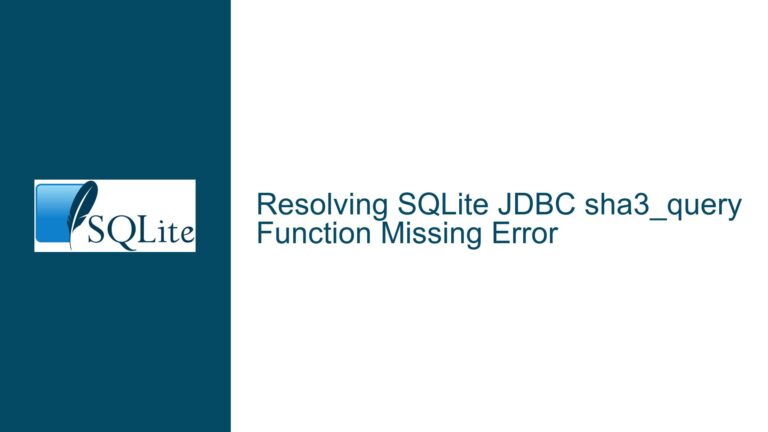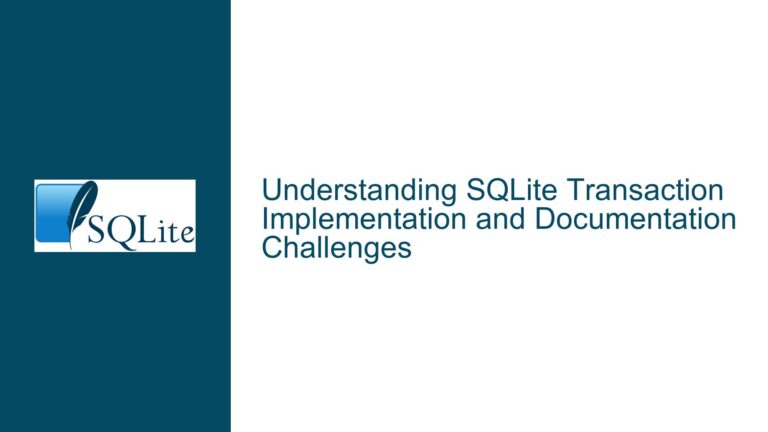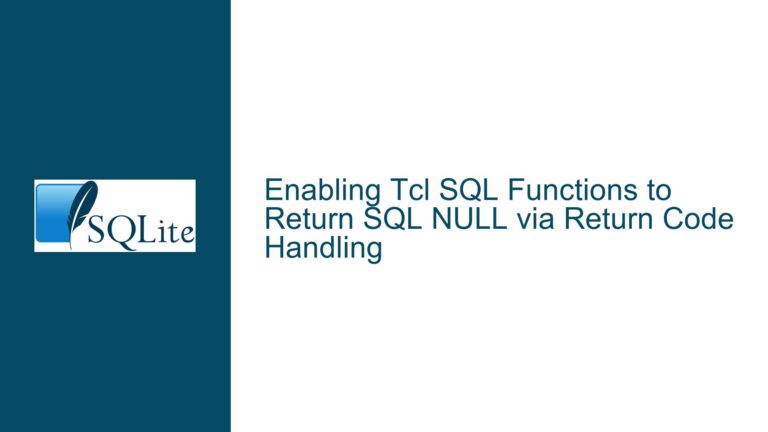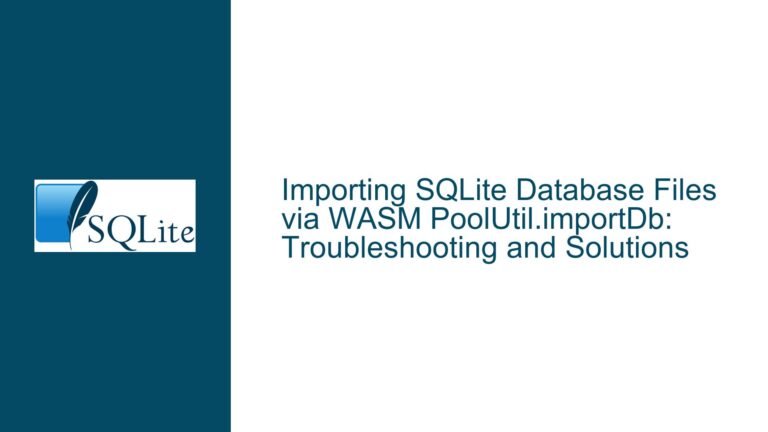SQLite Terminal Escape Sequence Misinterpretation and Anti-Forensics Concerns
SQLite Terminal Escape Sequence Misinterpretation and Anti-Forensics Concerns
Terminal Interpretation of ANSI Escape Sequences in SQLite Output
The core issue revolves around the misinterpretation of ANSI escape sequences in SQLite output, particularly when interacting with the SQLite command-line interface (CLI) in a terminal environment. ANSI escape sequences are special sequences of characters used to control text formatting, color, and other display attributes in terminal environments. These sequences are not inherently problematic, but their interpretation by the terminal can lead to unexpected behavior when SQLite outputs data containing these sequences.
When a user inserts a string containing ANSI escape sequences into a SQLite database, SQLite stores the data exactly as provided. For example, inserting the string \e[32mThis text is green.\e[0m into a SQLite table will store the escape sequences as part of the string. When this data is later queried and displayed in a terminal, the terminal interprets the escape sequences, resulting in formatted output (e.g., colored text). This behavior is not a result of SQLite parsing or interpreting the escape sequences; rather, it is the terminal that processes these sequences and applies the corresponding formatting.
The confusion arises when users mistakenly attribute this behavior to SQLite itself, believing that SQLite is parsing or interpreting the escape sequences. This misunderstanding can lead to concerns about potential vulnerabilities, particularly in the context of anti-forensics, where malicious actors might exploit terminal behavior to obscure or manipulate data visibility.
Misattribution of Terminal Behavior to SQLite Parsing
The misattribution of terminal behavior to SQLite parsing is a critical aspect of this issue. SQLite is designed to store data exactly as provided, without modification or interpretation. This design principle ensures data integrity and consistency, which are fundamental to database systems. When a user inserts a string containing ANSI escape sequences, SQLite stores the sequence as part of the string, and when the data is queried, SQLite returns the exact sequence that was stored.
The terminal, on the other hand, is responsible for interpreting these sequences and applying the corresponding formatting. For example, the sequence \e[32m is interpreted by the terminal as a command to change the text color to green, and \e[0m resets the formatting. This interpretation occurs entirely within the terminal environment and is independent of SQLite’s handling of the data.
The misattribution of this behavior to SQLite can lead to incorrect conclusions about potential vulnerabilities. For instance, a user might believe that SQLite is parsing the escape sequences and applying formatting, leading to concerns about data manipulation or anti-forensics. However, this is not the case; SQLite is merely storing and returning the data as provided, and the terminal is responsible for any formatting that occurs.
Exploitation of Terminal Behavior for Anti-Forensics
The exploitation of terminal behavior for anti-forensics is a potential concern that arises from the misinterpretation of ANSI escape sequences. Anti-forensics refers to techniques used to obscure or manipulate data to hinder forensic analysis. In the context of SQLite and terminal behavior, a malicious actor could insert strings containing ANSI escape sequences into a database to manipulate the display of data in a terminal environment.
For example, inserting the sequence \e[2A (which moves the cursor up two lines) into a username field could cause the terminal to overwrite previous lines when displaying the data. This could be used to obscure the presence of a particular username, making it difficult for a forensic analyst to detect. Similarly, inserting the sequence \e[8m (which makes text invisible) could render certain data invisible in the terminal, further complicating forensic analysis.
However, it is important to note that this exploitation relies entirely on the behavior of the terminal and not on any inherent vulnerability in SQLite. SQLite stores the data exactly as provided, and the terminal interprets the escape sequences. This means that the exploitation is limited to environments where the data is displayed in a terminal that interprets ANSI escape sequences. In other environments, such as web front-ends or SQLite GUI tools, the escape sequences would be displayed as plain text, and the manipulation would not occur.
Addressing the Misinterpretation and Potential Exploitation
To address the misinterpretation of ANSI escape sequences and the potential for exploitation, it is essential to understand the roles of SQLite and the terminal in handling these sequences. SQLite’s role is to store and return data exactly as provided, without modification or interpretation. The terminal’s role is to interpret ANSI escape sequences and apply the corresponding formatting.
One approach to mitigating the potential for exploitation is to ensure that data containing ANSI escape sequences is handled appropriately in environments where terminal interpretation could lead to manipulation. This could involve sanitizing input to remove or escape ANSI sequences before inserting data into the database, or using tools and environments that do not interpret ANSI sequences when displaying data.
Another approach is to educate users about the distinction between SQLite’s handling of data and the terminal’s interpretation of ANSI escape sequences. By understanding that SQLite does not parse or interpret these sequences, users can better assess the potential risks and take appropriate measures to mitigate them.
In conclusion, the issue of ANSI escape sequence misinterpretation in SQLite output is primarily a result of terminal behavior rather than any inherent vulnerability in SQLite. By understanding the roles of SQLite and the terminal, and by taking appropriate measures to handle data containing ANSI sequences, users can mitigate the potential for exploitation and ensure the integrity and visibility of their data.






